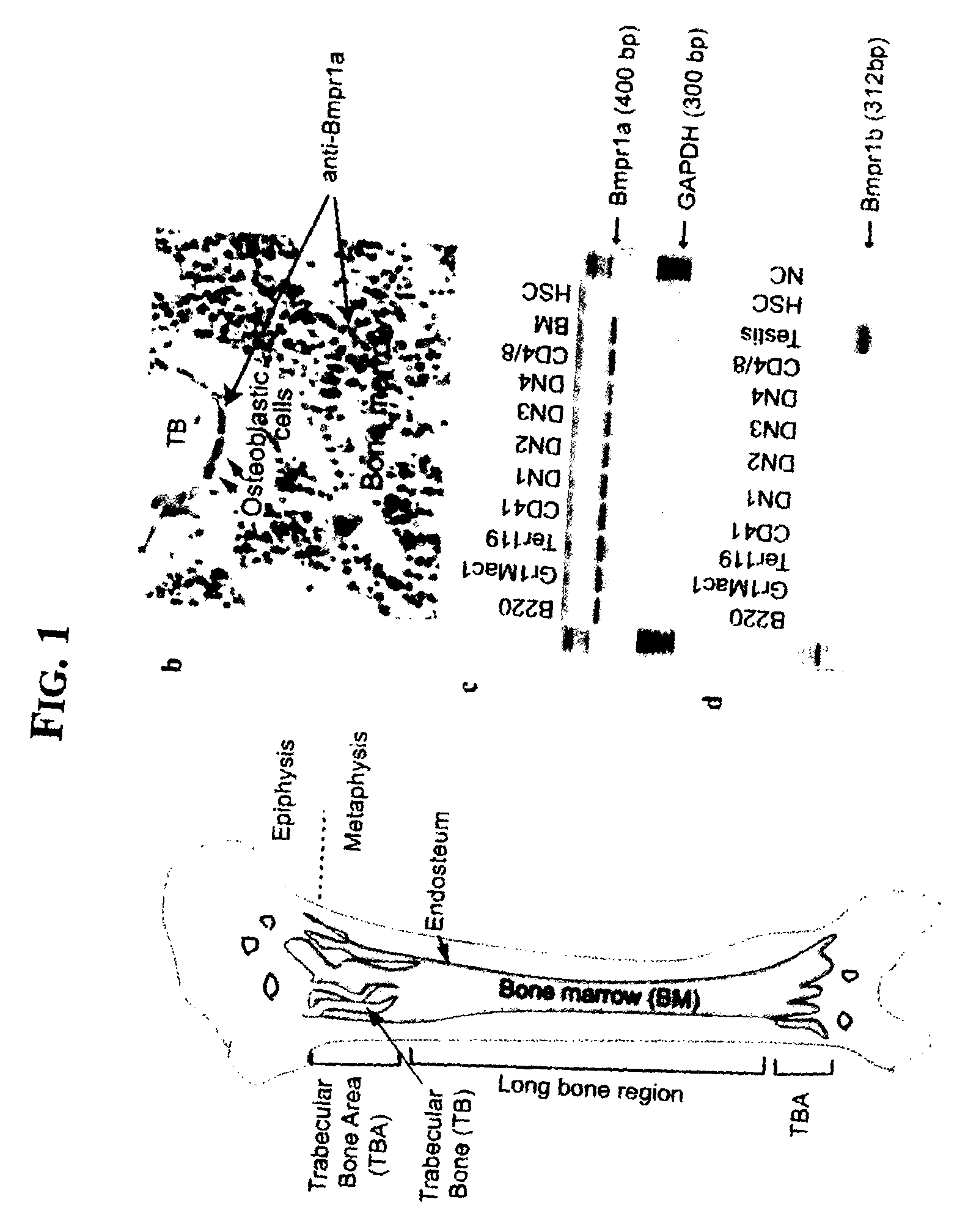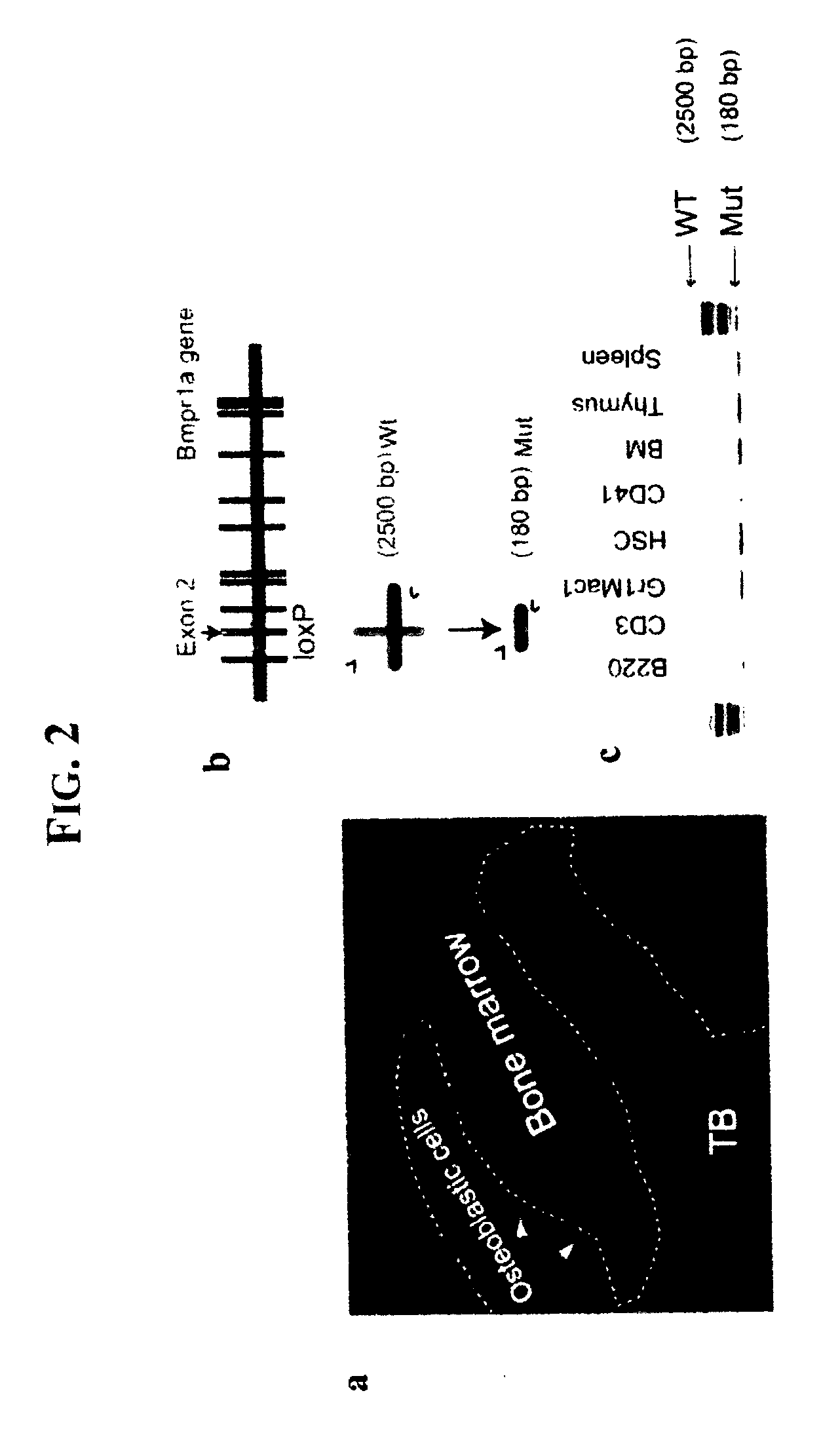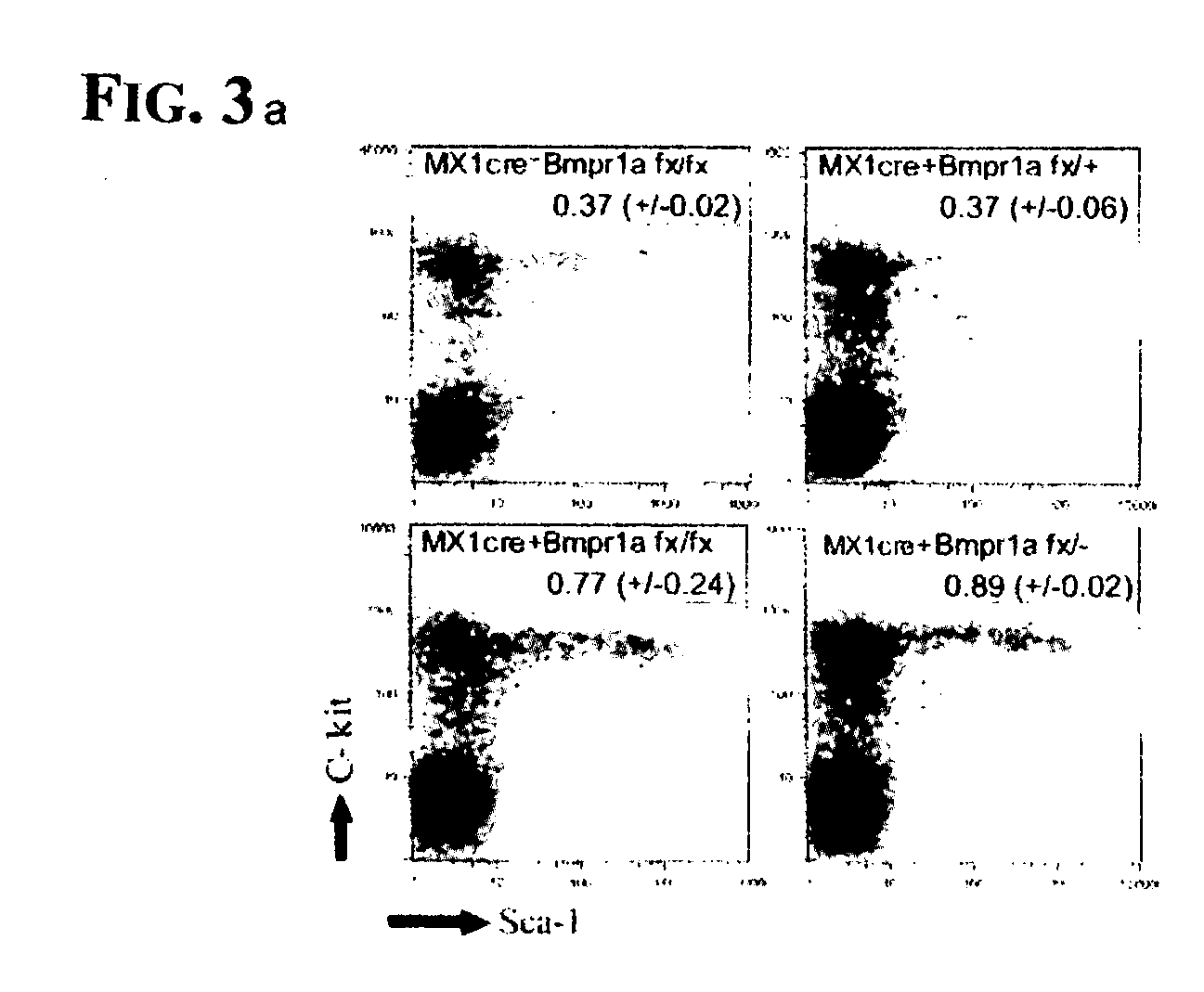Hematopoietic stem cell niche cells
a technology of niche cells and hematopoietic stem cells, which is applied in the field of hematopoietic stem cell niche cells, can solve the problems of imposing limitations on the use of these cells in transplantation, affecting the mechanistic study of stem cell properties, and lack of adequate treatmen
- Summary
- Abstract
- Description
- Claims
- Application Information
AI Technical Summary
Benefits of technology
Problems solved by technology
Method used
Image
Examples
example 1
[0128] An investigation of the roles of the BMP signaling pathway in regulating adult HSC development in vivo was done. An approach was taken of blocking the BMP signal through inactivation of one of its receptors and assaying the consequences in the corresponding animal model. More particularly, the expression patterns of Bmpr1a (Alk3) and b (Alk6) were analyzed in bone marrow and the surrounding bone tissue. Expression of Bmpr1a was found, by immunohistochemical staining (IHS) in bone marrow cells and most osteoblasts using anti-Bmpr1a antiserum, shown in FIG. 1b. As such, bone / bone marrow sections from Wt C57BL / 6 mice were immunohistochemically stained using anti-Bmpr1a serum.
[0129] Using an RT-PCR assay, expression of Bmpr1a was detected in most, if not all, hematopoietic lineages apart from the HSC population, shown in FIG. 1c. To examine expression GAPDH (glyceraldehyde-3-phosphate dehydrogenase) was used as an internal control. The various hematopoietic cell types shown in th...
example 2
[0130] It is known that mice with a deletion of Bmpr1b are viable but have not been reported to have hematopoietic defects, while mice with the null Bmpr1a mutation are embryonically lethal. Thus, direct investigation of BMP's role in the late stages of development is difficult. A conditional knockout mouse model was generated by crossing a Bmpr1a.sup.fx / fx mouse line with an interferon-inducible Mx1-Cre mouse line. In the Bmpr1a.sup.fx / fx mouse line, Exon 2 of the Bmpr1a gene is flanked by two LoxP sites, shown in FIG. 2b, and can, therefore, be excised by Cre-mediated recombination. Using PCR analysis, pre-excision (2500 bp) and post-excision (180 bp) of Exon 2 can be determined. Heterozygous Bmpr1a.sup.+ / - was also used to generate Bmpr1a.sup.fx / - as a control. Efficiency of Mx1-Cre in inducing recombination was examined by crossing Mx1-Cre mice with Z / EG reporter mice. The mice were then assayed following interferon induction by injection of polyl:polyC (PolyI:C, 250 .mu.g / mouse...
example 3
[0134] HSC populations of Mx1-Cre.sup.+Bmpr1a.sup.fx / fx mutant mice were further analyzed. As is known, an HSC population is a heterogeneous mixture, including long-term (LT) and short-term (ST) HSCs. To distinguish LT-HSC from ST-HSC, mice were injected with BrdU to label cycling cells. Three hours after labeling, the HSC population was analyzed to distinguish ST-HSCs from LT-HSCs, according to the differences in their cell-cycle state. The percentage of BrdU.sup.- HSC population (including the quiescent LT-HSCs) increased by an average of 2.4 times in the Bmpr1a mutant mice, as compared to littermate controls. The percentage of BrdU-positive HSC population (including the cycling ST-HSCs) was similar to that in the littermate controls, as shown in FIG. 3c. Therefore, direct comparison of the entire HSC population provided an under-estimated, but reliable representation, shown in FIG. 3b (1.6 fold) of the LT-HSC number difference, shown in FIG. 3c (2.4 fold), between the mutant and ...
PUM
| Property | Measurement | Unit |
|---|---|---|
| Nucleic acid sequence | aaaaa | aaaaa |
| Recombination enthalpy | aaaaa | aaaaa |
Abstract
Description
Claims
Application Information
 Login to View More
Login to View More - R&D
- Intellectual Property
- Life Sciences
- Materials
- Tech Scout
- Unparalleled Data Quality
- Higher Quality Content
- 60% Fewer Hallucinations
Browse by: Latest US Patents, China's latest patents, Technical Efficacy Thesaurus, Application Domain, Technology Topic, Popular Technical Reports.
© 2025 PatSnap. All rights reserved.Legal|Privacy policy|Modern Slavery Act Transparency Statement|Sitemap|About US| Contact US: help@patsnap.com



